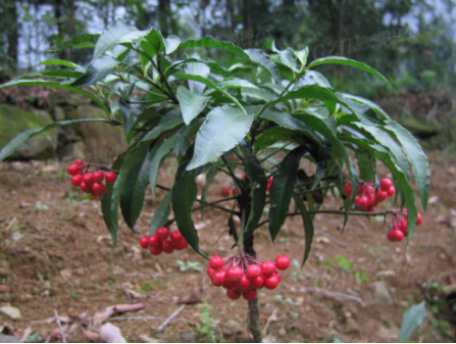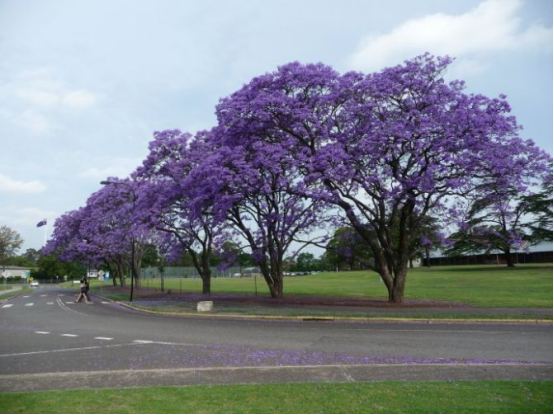How to cultivate olive flowers
Soil
Olive flower is suitable for growing in fertile, well-drained sandy soil. It is resistant to drought and has strong adaptability to the soil. It can grow in both slightly alkaline sandy loam and calcareous clay.
Temperature
Olive flower is relatively hardy, can endure a low temperature of-12 ℃, and can spend the winter outdoors in winter. It is a longevity tree with strong growth ability.

Watering
Olive flowers are more resistant to drought, but it is necessary to keep the soil moist. Too long sunlight in summer will lead to water shortage, so it is necessary to ensure an adequate water supply.
Fertilizer application
The young trees of olive flowers are mainly fertilized with nitrogen fertilizer, which is applied frequently and thinly, once every two months, or once before and after the extraction. Results the fertilization of the tree is mainly nitrogen, phosphorus and potassium fertilizer, under dripping water outside the crown, open a ring ditch with a depth of 20 cm, or two half-moon-shaped ditches, fertilizer is applied into the ditch, such as liquid fertilizer, cover the soil after it is dry, and then cover the soil after dry fertilizer application.
Weed
During the growth of olive flowers, weeds need to be weeded regularly to avoid weeds that consume the nutrients of olive trees. The choice of glyphosate or paraquat is a good herbicide. Herbicide has obvious drug damage to olive branches and leaves, and can not touch the branches and leaves when spraying. The spraying time is generally controlled before the spring grass blossoms and seeds and the summer grass flourishes for a long time in late June.
What else do you need to pay attention to when raising olive flowers?
How to raise olive flowers? Matters needing attention in olive flower culture
The crown of olive flowers is tall and straight and verdant, and the flowers are delicate and white. Silver and green reflect each other in the sun, which is a symbol of wisdom, courage and victory. So, how can olive flowers be cultivated? Points for attention in olive flower culture.
1. Planting methods of olive flowers
a. Colonization of large seedlings:
When planting, the root is closely combined with the soil. The trunk can be buried 6 centimeters deep. The top is covered with yellow mud, and the trunk is covered with straw to prevent the wind from blowing and losing water in the sun. The straw must be 10 cm away from the ground and cannot come into contact with the soil, so as not to attract termites. Watering after planting, attention: (1) seedling and planting must be very careful not to break the root bark and damage the root point; (2) there is no base fertilizer in the hole, only the red-yellow soil topsoil which is easy to root is used; (3) the soil must be compacted, this is the key to survival; (4) build a protective frame after planting.
b. Seedling colonization:
Planting time: from Grain Rain to the Beginning of Summer is more appropriate.
Olive tree planting method: burning soil and legume green manure as base fertilizer and sprinkling 1 jin of lime in each hole to prevent termites. When planting, mix the surface fine soil with water into the mud, plant the seedlings into the slurry, make the lateral roots stretch naturally, and then cover the fine soil and compact it so that the root soil can be fully contacted.
2. Fertilizer and water management of olive flower
(1) Fertilizer: large amounts of elements, nitrogen, phosphorus, potassium, calcium and sulfur.
a. Fertilization for young trees:
Give priority to nitrogen fertilizer, mix properly with other fertilizers, and take frequent and thin application as the principle, generally once every two months, or before and after the extraction.
(2) fertilization of fruiting trees:
Three times a year: pre-anthesis fertilizer: about March nitrogen or: pre-anthesis fertilizer
Post-fruit fertilizer: nitrogen and potassium fertilizer for strong flowers and fruits around October
Fertilizer for flower bud differentiation: nitrogen, phosphorus and potassium fertilizer after fruit from November to December
Fertilization method: under dripping water outside the crown, open a ring ditch with a depth of 20 cm, or two half-moon-shaped ditches, and apply fertilizer into the ditch. If it is liquid fertilizer, cover the soil after it drips, and then cover the soil after the dry fertilizer is applied.
3. Olive flower shaping and pruning
(1) shaping of young trees:
After the seedlings have been planted and survived, they will be dried when the seedlings are 1.5 meters high. It is usually cut at about 0.8 meters. Five branches were selected as the main branches in different directions, and when the main branches were too long, the main branches were cut short at 60 cm, and each main branch left 3 lateral branches, which were treated step by step to form an early fruiting and high yield crown.
(2) pruning olive flower and fruit trees:
In principle, the initial production trees are mainly light pruning, mainly cutting off overlong branches and promoting lateral branches; pruning in the peak period is mainly to regulate the ratio of vegetative growth to reproductive growth; pruning in the later stage is mainly to cut off the withered branches, shade branches, disease and insect branches inside the crown.
Olive flower culture method is actually relatively simple, for potted flower friends must know how to maintain it. These are the ways to cultivate olive flowers.
Cultivation and pruning of olive flowers
Olive tree pruning should be in early summer, pruning can allow olive flower branches to sprout again.
Diseases and insect pests
The common disease of olive flower is anthracnose, which can be sprayed with 600 times copper oxychloride solution.
Soil
Olive tree is a world famous high-quality woody oil tree characterized by "high yield, high quality and high benefit". It is a strong negative tree, which likes to grow in land with good drainage, drought tolerance and strong adaptability to soil. it can grow in slightly alkaline sandy loam and limestone-rich clay.
Does everyone understand the function of olive flowers? Olive has always been called "the fruit of lung and stomach" in traditional Chinese medicine, which has a very good effect, but do not eat too much, you must follow the doctor's advice and then eat it in the right amount!
- Prev

The culture method of cinnabar root:
First, humidity should be noted that cinnabar roots can only grow in wet or semi-dry and semi-humid climates, and the air humidity should be controlled at 60% 80%, otherwise the leaves in the lower part will turn yellow and fall, and the leaves in the upper part will be dim. Temperature should pay attention to the hometown of cinnabar root in the tropics
- Next

The reason why the blue flower does not blossom
Blue flowers like to grow in a warm, humid, sunny environment and are not resistant to frost, snow and cold. Therefore, the planting environment of blue flower is very important, from which we can find out why it does not blossom. First of all, it may be that there is not enough sunlight, and the lack of sunlight will lead to a lack of growth nutrients, which will affect the flowering of blue flowers.
Related
- Fuxing push coffee new agricultural production and marketing class: lack of small-scale processing plants
- Jujube rice field leisure farm deep ploughing Yilan for five years to create a space for organic food and play
- Nongyu Farm-A trial of organic papaya for brave women with advanced technology
- Four points for attention in the prevention and control of diseases and insect pests of edible fungi
- How to add nutrient solution to Edible Fungi
- Is there any good way to control edible fungus mites?
- Open Inoculation Technology of Edible Fungi
- Is there any clever way to use fertilizer for edible fungus in winter?
- What agents are used to kill the pathogens of edible fungi in the mushroom shed?
- Rapid drying of Edible Fungi

